Table of Contents
Ready to ditch the crowded gym and sculpt a stronger, leaner you? The answer might be simpler (and heavier) than you think: a kettlebell full body workout program. This isn't just another fitness fad; kettlebells have been around for centuries, building serious strength and endurance long before dumbbells were even a twinkle in a gym rat's eye. Kettlebells offer a unique blend of cardio and strength training, hitting multiple muscle groups simultaneously, and torching calories like nobody's business.
Why Choose a Kettlebell Full Body Workout Program?
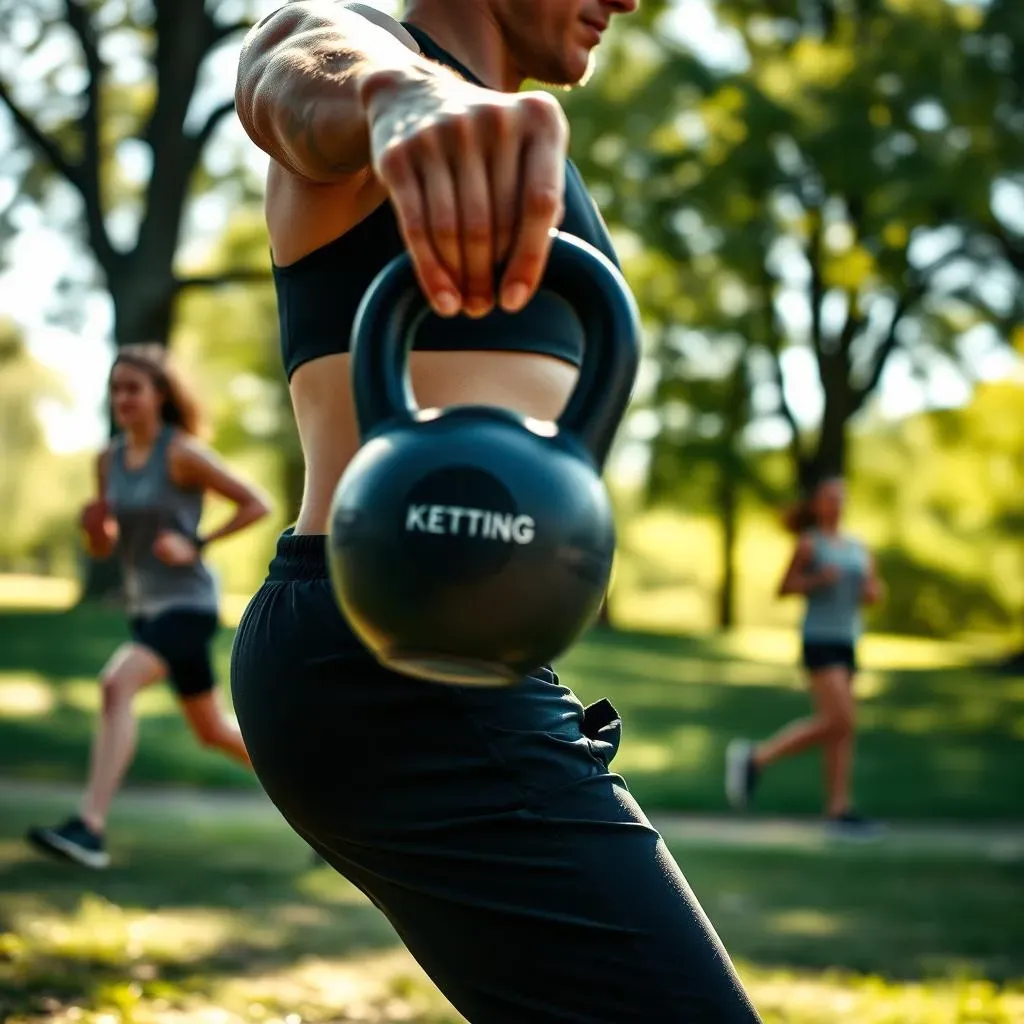
Why Choose a Kettlebell Full Body Workout Program?
Efficiency is King: Time-Saving Workouts
Let's face it, time is precious. Juggling work, family, and everything else leaves little room for endless hours at the gym. That's where a kettlebell full body workout program shines. Unlike traditional isolation exercises that target individual muscles, kettlebell movements are compound exercises. They engage multiple muscle groups simultaneously, turning every workout into a highly efficient calorie-torching, muscle-building session. Think squats with a press, swings that work your entire posterior chain, and lunges that challenge your core – all in one fluid motion. This means you can achieve a full-body workout in as little as 30 minutes, making it perfect for even the busiest schedules.
I remember when I first started using kettlebells, I was amazed at how quickly I could get a complete workout. I used to spend over an hour doing separate exercises for my legs, arms, and core. With kettlebells, I could hit everything in half the time, and honestly, I felt like I was getting even better results.
Functional Strength for Real Life
Forget about just looking good; kettlebells help you move better and feel stronger in your everyday life. The exercises mimic real-world movements, improving your balance, coordination, and overall functional strength. Picking up groceries, carrying kids, or even just walking up stairs becomes easier. Kettlebell training translates directly into improved performance in sports and other physical activities. It's about building a body that's not just for show but built to perform.
Ever notice how awkward it feels to pick up something heavy from the ground? Kettlebell exercises like the deadlift and swing train your body to move efficiently and safely, reducing your risk of injury in everyday situations.
Benefit | Description |
|---|---|
Time Efficiency | Full-body workouts in 30 minutes or less. |
Functional Strength | Improved movement patterns for everyday activities. |
Versatility | Adaptable for all fitness levels and goals. |
Versatility and Adaptability: A Workout for Everyone
One of the best things about a kettlebell full body workout program is its versatility. Whether you're a beginner or a seasoned athlete, the exercises can be modified to suit your fitness level and goals. You can adjust the weight of the kettlebell, the number of repetitions, and the complexity of the movements to create a workout that's perfectly tailored to you. Plus, you don't need a fancy gym membership – all you need is a kettlebell and a little bit of space.
I've seen people of all ages and fitness levels transform their bodies with kettlebells. It's not just for hardcore athletes; it's a tool that anyone can use to improve their health and well-being.
Essential Kettlebell Exercises for a Full Body Transformation
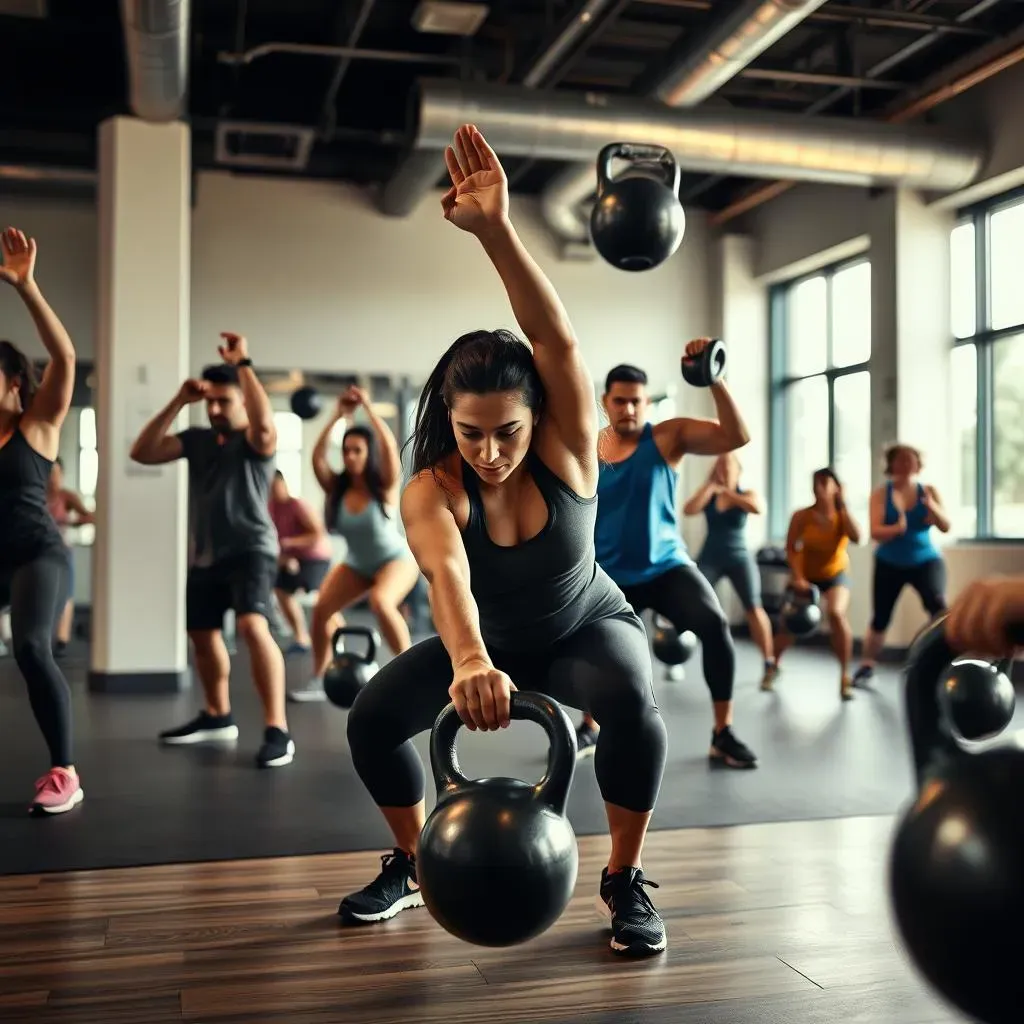
Essential Kettlebell Exercises for a Full Body Transformation
Mastering the Basics: The Foundation of Your Workout
so you're ready to dive into the world of essential kettlebell exercises for a full body transformation? Awesome! But before you start swinging like a madman, it's crucial to nail down the foundational movements. These aren't just warm-ups; they're the building blocks upon which you'll construct your entire kettlebell empire. We're talking about the moves that engage multiple muscle groups, improve your coordination, and set you up for success with more advanced exercises down the line.
Think of it like learning to play a musical instrument. You wouldn't jump straight into a complicated concerto without first mastering the scales, right? Same goes for kettlebells. Focus on proper form, controlled movements, and building a solid base of strength before you start adding weight or complexity. Trust me, your body will thank you for it in the long run. Start with lighter weights to master the movement. It's more important to have good form than to lift heavy.
The Top 5 Kettlebell Exercises You Need to Know
Alright, let's get down to brass tacks. Here are the five essential kettlebell exercises that should form the core of your full body transformation:
- Kettlebell Swings: The king of kettlebell exercises! This explosive movement works your entire posterior chain (glutes, hamstrings, back) while also engaging your core and shoulders. It's a fantastic calorie burner and a great way to build power.
- Goblet Squats: Holding the kettlebell close to your chest during squats improves your posture and core engagement. It's a great way to build leg strength and stability.
- Kettlebell Deadlifts: A fundamental movement for building overall strength. Kettlebell deadlifts teach you to hinge at the hips and lift with your legs, protecting your lower back.
- Kettlebell Clean and Press: This dynamic exercise combines a clean (lifting the kettlebell from the ground to the racked position) with an overhead press. It builds strength and coordination in your shoulders, arms, legs, and core.
- Turkish Get-Up: This is a more advanced exercise that involves moving from lying on the ground to standing, all while holding a kettlebell overhead. It's a full-body challenge that improves strength, mobility, and coordination.
Perfecting Your Form: Tips for Each Exercise
Knowing the exercises is one thing; performing them correctly is another. Here are some quick tips to help you nail the form on each of the essential movements:
- Kettlebell Swings: Focus on hinging at the hips and driving with your glutes. Keep your back straight and your core engaged. The kettlebell should swing up to chest height, not overhead.
- Goblet Squats: Keep your chest up, your back straight, and your core tight. Squat down as low as you can while maintaining good form.
- Kettlebell Deadlifts: Hinge at the hips, keep your back straight, and engage your core. Lift with your legs, not your back.
- Kettlebell Clean and Press: Use your legs to generate power during the clean. Keep the kettlebell close to your body and press it overhead with a straight arm.
- Turkish Get-Up: Break the movement down into smaller steps and focus on maintaining control throughout. Don't rush it!
Sample Beginner Workout
Here's a sample beginner workout incorporating these essential kettlebell exercises. Perform each exercise for the prescribed number of repetitions, rest for 60 seconds between sets, and repeat the entire circuit 2-3 times.
- Kettlebell Swings: 10 repetitions
- Goblet Squats: 8 repetitions
- Kettlebell Deadlifts: 6 repetitions
- Kettlebell Clean and Press: 5 repetitions per arm
- Turkish Get-Up: 1 repetition per side (start without weight if needed)
Creating Your Personalized Kettlebell Full Body Workout Program
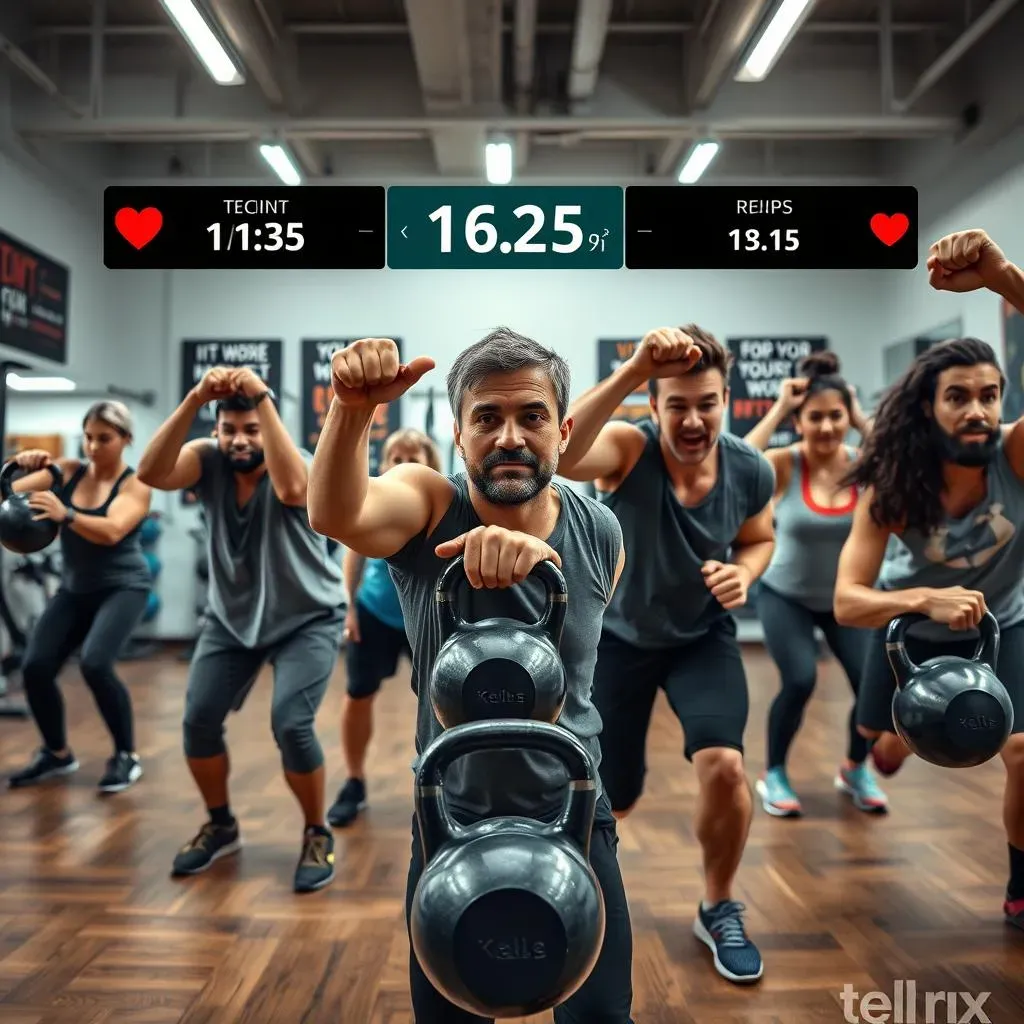
Creating Your Personalized Kettlebell Full Body Workout Program
Assessing Your Fitness Level: Where Are You Starting?
Alright, so you're pumped to start a kettlebell full body workout program, that's fantastic! But before you jump in headfirst, it's crucial to take a good, honest look at your current fitness level. Are you a complete beginner, someone who's been hitting the gym sporadically, or a seasoned athlete looking to add a new dimension to your training? Knowing where you stand is the first step in creating a program that's safe, effective, and tailored to your specific needs. Don't try to be a hero and start with weights that are too heavy or exercises that are too advanced. It's better to start slow and build up gradually than to risk injury.
Think of it like planning a road trip. You wouldn't just hop in the car and start driving without knowing your starting point, your destination, or the route you're going to take, right? Same goes for your fitness journey. Assess your current strength, endurance, mobility, and any existing injuries or limitations. This will help you choose the right exercises, weights, and intensity levels for your program.
Setting Realistic Goals: What Do You Want to Achieve?
Now that you know where you're starting from, it's time to define your destination. What do you hope to achieve with your kettlebell full body workout program? Are you looking to build muscle, lose weight, improve your cardiovascular fitness, or simply feel stronger and more energetic in your daily life? Setting clear, realistic goals is essential for staying motivated and tracking your progress.
Be specific with your goals. Instead of saying "I want to get in shape," try something like "I want to lose 10 pounds in 2 months" or "I want to be able to perform 10 unbroken kettlebell swings with a 35-pound kettlebell." The more specific your goals, the easier it will be to create a program that helps you achieve them.
Goal | Example | How to Measure |
|---|---|---|
Weight Loss | Lose 10 pounds in 2 months | Track your weight weekly |
Strength Gain | Perform 10 unbroken kettlebell swings with a 35-pound kettlebell | Test your swings every 2 weeks |
Improved Endurance | Run a mile without stopping | Time your mile run weekly |
Choosing the Right Exercises: Tailoring Your Workout to Your Goals
With your fitness level assessed and your goals clearly defined, it's time to select the exercises that will form the core of your kettlebell full body workout program. Remember those essential exercises we talked about earlier? Those are a great starting point, but you can also add other movements based on your specific goals and preferences. For example, if you're looking to build more upper body strength, you might include exercises like kettlebell rows, push-ups, or overhead presses. If you're focusing on improving your cardiovascular fitness, you could incorporate exercises like kettlebell snatches or burpees.
Don't be afraid to experiment and find exercises that you enjoy. The more you enjoy your workouts, the more likely you are to stick with them in the long run.
Kettlebell Full Body Workout Program: Common Mistakes and How to Avoid Them
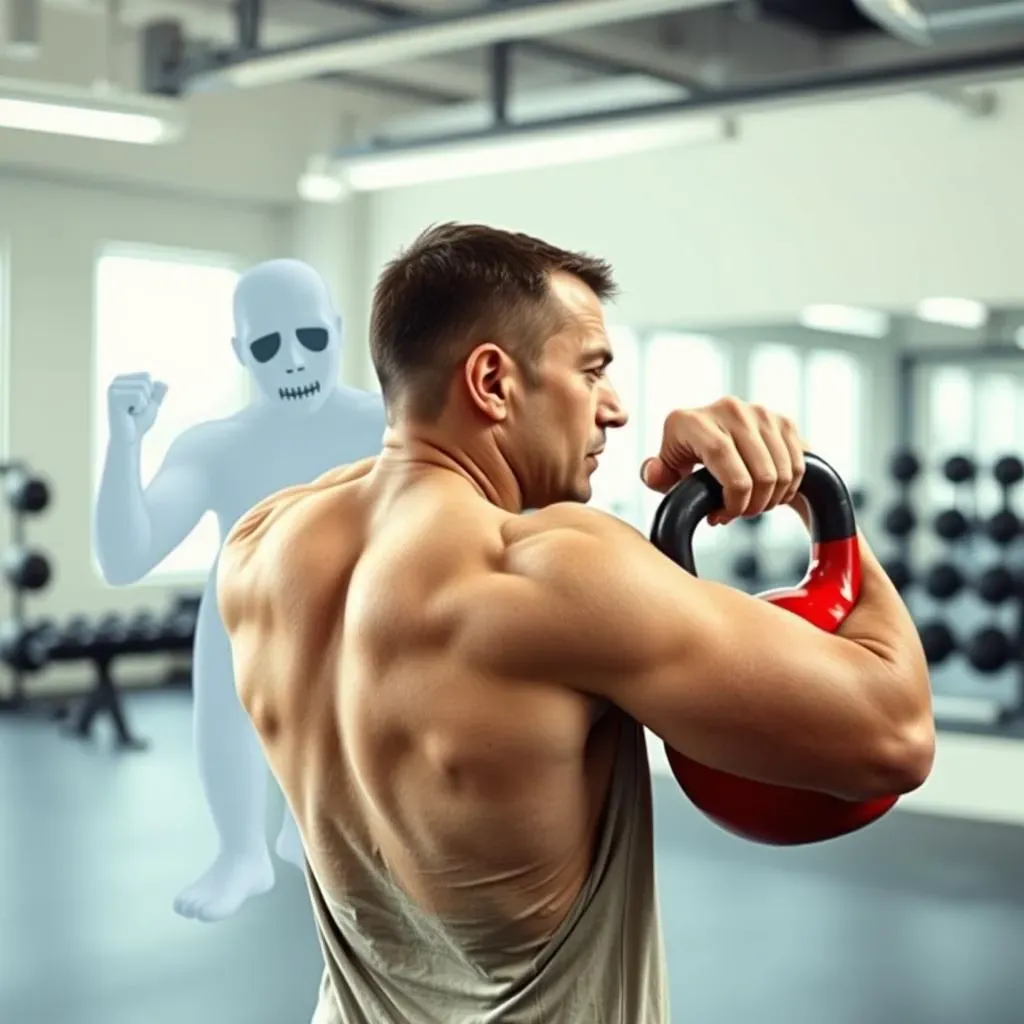
Kettlebell Full Body Workout Program: Common Mistakes and How to Avoid Them
Rushing the Learning Curve
One of the biggest mistakes I see people make with a kettlebell full body workout program is trying to do too much, too soon. They watch a few videos online, grab the heaviest kettlebell they can find, and start swinging away with reckless abandon. This is a recipe for disaster! Kettlebell training requires proper technique and control. Rushing the learning curve not only increases your risk of injury but also prevents you from developing the foundational strength and coordination you need to progress safely and effectively.
Remember, it's better to start with lighter weights and master the movements before you start adding weight or complexity. Focus on quality over quantity. Your ego can wait; your body can't.
Ignoring Proper Form
Similar to rushing the learning curve, neglecting proper form is another common pitfall in a kettlebell full body workout program. Kettlebell exercises are dynamic and explosive, which means there's a lot of potential for things to go wrong if you're not paying attention to your technique. Rounding your back during swings, using your arms instead of your hips, or failing to engage your core can all lead to injuries and limit your results.
Take the time to learn the correct form for each exercise from a qualified instructor or reputable online resource. Record yourself performing the movements and compare them to videos of experienced kettlebell practitioners. Pay attention to your body and stop if you feel any pain. It's always better to err on the side of caution.
Mistake | Consequences | Solution |
|---|---|---|
Rushing the Learning Curve | Increased risk of injury, poor technique | Start with lighter weights, focus on proper form |
Ignoring Proper Form | Injuries, limited results | Learn from qualified sources, record yourself, pay attention to your body |
Using Excessive Weight | Compromised form, injuries | Choose a weight that allows you to maintain good form throughout the entire set |
Using Excessive Weight
It's tempting to grab the heaviest kettlebell you can find and try to impress yourself (and others) with your strength. But using excessive weight is a surefire way to compromise your form, increase your risk of injury, and ultimately hinder your progress in a kettlebell full body workout program. Choose a weight that challenges you but still allows you to maintain good form throughout the entire set. You should be able to perform all the repetitions with control and without feeling like you're about to collapse.
As you get stronger, you can gradually increase the weight. But don't rush it! It's better to progress slowly and safely than to get injured and have to take time off.
Fueling Your Body: Nutrition Tips for Kettlebell Full Body Workouts
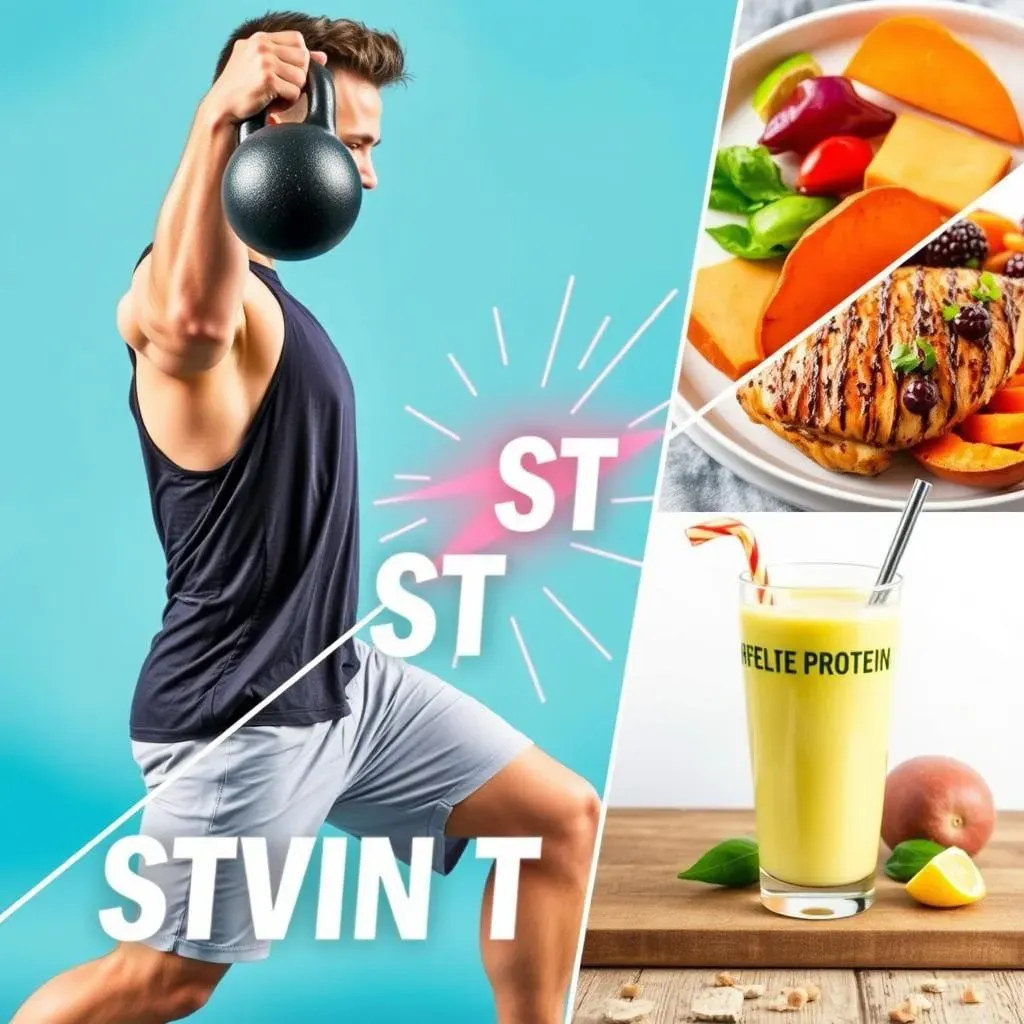
Fueling Your Body: Nutrition Tips for Kettlebell Full Body Workouts
The Importance of Nutrition for Kettlebell Training
so you're crushing it with your kettlebell full body workout program, that's amazing! But here's the thing: you can't out-train a bad diet. Nutrition is the fuel that powers your workouts, repairs your muscles, and helps you achieve your fitness goals. Think of your body like a high-performance engine. You wouldn't put cheap gas in a Ferrari, would you? Same goes for your body. If you want to get the most out of your kettlebell training, you need to fuel it with the right nutrients.
I've seen so many people work their tails off in the gym but then sabotage their efforts with poor eating habits. They wonder why they're not seeing the results they want, but the answer is simple: they're not giving their bodies the fuel they need to thrive.
Pre-Workout Fuel: Energizing Your Body for Action
What you eat before your kettlebell workout can have a significant impact on your performance. You need to provide your body with enough energy to power through the exercises without feeling sluggish or weighed down. A good pre-workout meal should be easily digestible and contain a mix of carbohydrates and protein. Carbs provide a quick source of energy, while protein helps to protect your muscles from breakdown.
Some great pre-workout options include:
- A banana with a tablespoon of almond butter
- A small bowl of oatmeal with berries and protein powder
- A protein shake with a handful of fruit
Post-Workout Recovery: Repairing and Rebuilding Your Muscles
After a tough kettlebell workout, your muscles are depleted and need to be replenished. A post-workout meal should focus on repairing muscle tissue and replenishing glycogen stores (your body's stored form of energy). Protein is essential for muscle repair, while carbohydrates help to restore glycogen levels. It's also important to rehydrate with plenty of water.
Some excellent post-workout options include:
- Grilled chicken or fish with sweet potatoes and vegetables
- A protein smoothie with fruit, spinach, and Greek yogurt
- A turkey sandwich on whole-wheat bread with avocado
Meal Timing | Nutrient Focus | Example Foods |
|---|---|---|
Pre-Workout | Carbohydrates, Protein | Banana with almond butter, Oatmeal with berries and protein powder |
Post-Workout | Protein, Carbohydrates | Grilled chicken with sweet potatoes, Protein smoothie with fruit and spinach |
Hydration: The Unsung Hero of Performance
Don't underestimate the importance of hydration when it comes to kettlebell training. Dehydration can lead to fatigue, muscle cramps, and decreased performance. Make sure you're drinking plenty of water throughout the day, especially before, during, and after your workouts. A good rule of thumb is to drink half your body weight in ounces of water per day.
For example, if you weigh 150 pounds, you should aim to drink 75 ounces of water per day. You may need to drink even more if you're sweating heavily during your workouts.
Conclusion: Embrace the Kettlebell Full Body Workout Program for a Stronger You
Incorporating a kettlebell full body workout program into your fitness routine is a game-changer. From its efficiency in targeting multiple muscle groups to its unique blend of strength and cardio benefits, the kettlebell offers a dynamic and effective way to achieve your fitness goals. Remember to focus on proper form, gradually increase the intensity, and listen to your body. With consistency and dedication, you'll not only see remarkable physical transformations but also experience improved overall health and well-being. So, pick up that kettlebell and start swinging your way to a stronger, fitter, and more resilient you!